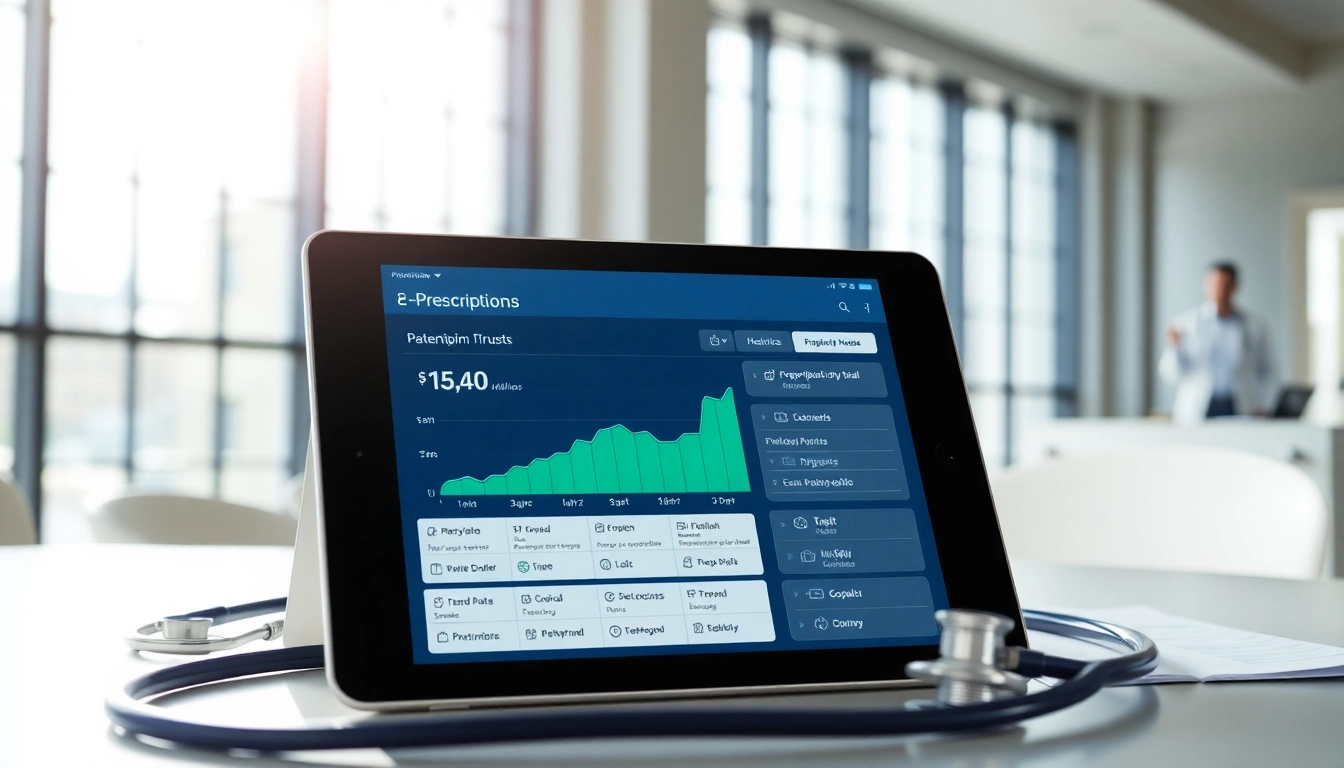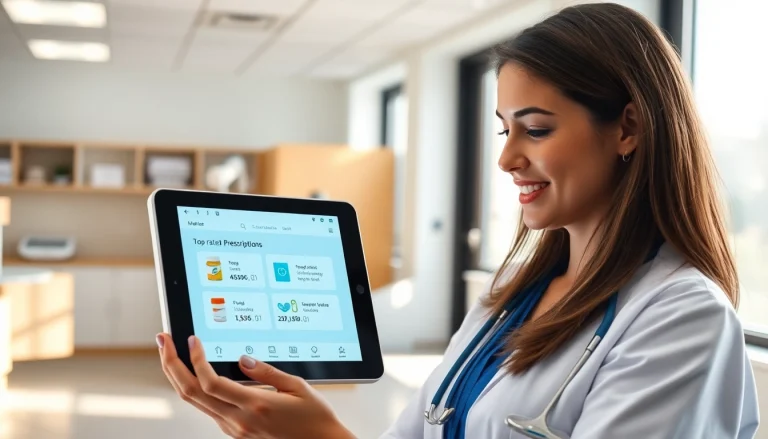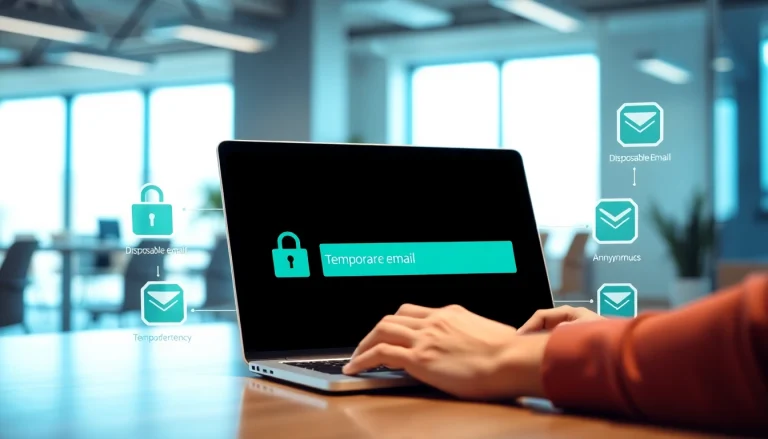Understanding Eprescription Technologies
What is Eprescription?
Eprescription, or electronic prescribing, is the process by which healthcare providers electronically send prescriptions directly to a pharmacy. This technology has fundamentally transformed the prescription process, allowing for greater efficiency and enhanced patient safety. By eliminating handwritten prescriptions, ePrescribing reduces the likelihood of medication errors stemming from poor handwriting or miscommunication. The process typically involves a secure interface where healthcare professionals can select medications, dosages, and instructions, which are then electronically transmitted to the pharmacy of the patient’s choice.
Benefits of Eprescription Systems
The implementation of ePrescribing systems has ushered in a wealth of benefits for both healthcare providers and patients alike:
- Increased Efficiency: Eprescription apps streamline the prescribing process, reducing the time healthcare professionals spend on telephone calls and paperwork.
- Improved Patient Safety: By minimizing human error in prescription writing and ensuring that prescription histories are readily available, patients can receive their medications more safely.
- Enhanced Communication: Direct communication between healthcare providers and pharmacies allows for real-time updates and quicker adjustments to prescriptions.
- Cost Savings: Many ePrescribing solutions can help reduce costs by preventing medication errors that require costly interventions or hospitalizations.
- Patient Convenience: Patients can have prescriptions sent directly to their chosen pharmacy, often leading to increased adherence to medication regimens.
Challenges in Eprescription Implementation
While ePrescribing offers numerous advantages, it is not without its challenges. These include:
- Initial Costs: Implementing an ePrescribing system can come with significant upfront expenses, including software, training, and potential hardware upgrades.
- Resistance to Change: Healthcare providers accustomed to traditional methods may resist adopting new technologies.
- Interoperability Issues: Ensuring that ePrescribing systems can communicate with other healthcare technologies is crucial for maximizing their effectiveness.
- Data Security Concerns: Protecting sensitive patient information from cyber threats is paramount, requiring robust data security measures.
Key Features of Eprescription Apps
User Experience and Interface Design
An essential aspect of any ePrescribing application is its user interface (UI). A well-designed app should be intuitive, enabling healthcare providers to navigate easily between different functionalities. Key features to consider include:
- Easy Navigation: A clear layout helps reduce the time it takes to complete prescriptions.
- Customizable Templates: Flexible templates allow healthcare providers to tailor the app to their specific needs.
- Mobile Compatibility: As many healthcare professionals operate in dynamic environments, mobile-friendly apps ensure they can access software on the go.
Integration with Other Healthcare Systems
Seamless integration with electronic health records (EHR) and other practice management systems is crucial for maximizing the benefits of ePrescribing. This integration allows for:
- Consolidated Patient Information: Healthcare providers can access comprehensive patient histories, leading to more informed prescribing practices.
- Streamlined Workflows: Automated data exchange reduces the need for duplicate data entry and minimizes errors.
- Improved Collaboration: Enhanced communication between providers and pharmacies fosters a more collaborative healthcare ecosystem.
Data Security and Compliance Standards
Ensuring patient data security is paramount in ePrescribing. Encrypted data transmission protects sensitive information while compliance with regulations, such as HIPAA in the United States, safeguards patient privacy. Essential security practices include:
- Regular Software Updates: Keeping software up to date ensures that any vulnerabilities are promptly addressed.
- User Training: Training healthcare professionals on secure practices is vital to prevent data breaches.
- Access Controls: Limiting access to sensitive information to authorized personnel reduces risk.
Comparative Analysis of Top Eprescription Apps
Evaluating User Reviews and Ratings
User reviews and ratings can provide invaluable insights into the effectiveness of ePrescribing solutions. It is crucial to consider both positive and negative feedback to gain a comprehensive understanding of each app’s performance. As new apps emerge, paying attention to metadata from app stores can reveal patterns in user satisfaction and areas requiring improvement.
Features Breakdown of Popular Options
A thorough evaluation of different ePrescribing apps involves analyzing their features. Key aspects to compare include:
- Prescription Management: How effectively can the app handle medication lists, refill requests, and patient communication?
- Reporting Capabilities: Does the app provide analytics that help track prescribing patterns and compliance?
- Support Services: What level of customer support do users receive for troubleshooting or training?
Cost-Effectiveness and ROI of Eprescription Apps
While assessing the financial implications of an ePrescribing app, consider both direct costs (e.g., subscription fees) and indirect benefits (e.g., saved time, reduced errors). Detailed analysis should include:
- Implementation Costs: Initial expenses versus potential savings over time through increased efficiency.
- Impact on Patient Outcomes: Evaluating how improved prescribing practices affect patient health can yield long-term financial benefits.
- Comparison of Different Vendors: A cost-benefit analysis across various platforms can assist in making an informed decision.
Best Practices for Choosing an Eprescription Application
Identifying Specific Healthcare Needs
Before selecting an ePrescribing solution, it is essential to assess the unique needs of your practice or organization. Consider factors such as:
- Specialty Focus: Different healthcare specialties may require specific functionalities.
- Size of Practice: Solutions should cater to the scale of operations, from solo practitioners to large healthcare institutions.
- Technological Resources: The infrastructure already in place can impact the choice of app.
Trial and Feedback Procedures
Before committing to a specific ePrescribing solution, utilizing trial periods can be invaluable. Engaging healthcare staff and obtaining feedback can ensure the chosen app meets practical requirements. Consider implementing:
- User Training: Provide training sessions during trial periods to facilitate ease of transition.
- Feedback Loops: Establish methods for collecting user input on app features and usability.
- Performance Metrics: Use key performance indicators (KPIs) to gauge the app’s effectiveness.
Long-term Support and Updates
The longevity of your ePrescribing solution hinges on ongoing support and software updates. Assess vendors for their commitment to:
- Regular Updates: Frequent upgrades can enhance functionality and security over time.
- Customer Support: Determine the availability and responsiveness of support services, especially during critical times.
- Community Engagement: Many successful platforms foster user communities that contribute to shared knowledge and troubleshooting.
Future Trends in Eprescription Applications
Advancements in Technology and AI
The trajectory of ePrescribing technology hints at increasing incorporation of artificial intelligence (AI) to enhance decision-making processes. Future advancements may include:
- Predictive Analytics: AI could offer predictions about medication interactions, optimizing patient safety.
- Natural Language Processing: This technology can streamline interactions, allowing providers to input information using voice commands.
- Personalization: Tailoring medication plans to individual patient preferences and histories could become more seamless and data-driven.
Increasing User Adoption in Healthcare
As digital solutions gain traction in other industries, the healthcare sector is likely to see a significant rise in ePrescribing adoption. Strategies to promote this involve:
- Education and Training: Providing comprehensive training for healthcare professionals can alleviate fears and concerns about new technology.
- Patient Engagement: Encouraging patients to express interest in ePrescribing can prompt healthcare providers to adopt these tools.
- Regulatory Support: Favorable policies that incentivize ePrescribing usage can drive broader adoption.
Regulatory Changes and Their Impact
Regulatory landscape shifts can significantly influence the ePrescribing industry. Future changes may address:
- Interoperability Standards: Stricter regulations may push for better integration among various healthcare systems.
- Data Privacy Protections: New laws can enhance patient data protections, altering how apps store and manage sensitive information.
- Incentive Programs: Government-led initiatives could promote ePrescribing usage among smaller practices that may have been hesitant to adopt technology.
In conclusion, navigating the landscape of ePrescribing applications requires understanding both the challenges and opportunities. By harnessing insights from eprescription app reviews, stakeholders can make informed decisions that enhance the efficiency, safety, and effectiveness of healthcare delivery.








